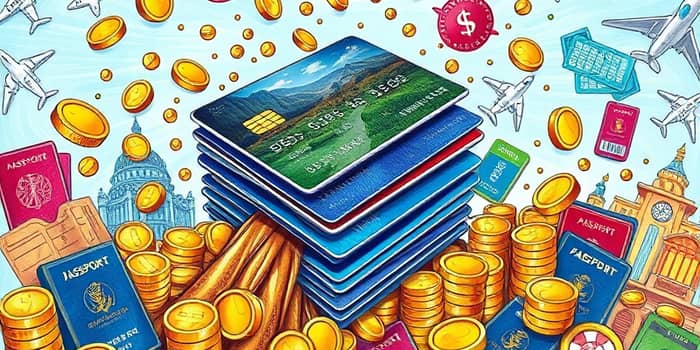
From free flights to cash back, credit card sign-up bonuses have become a cornerstone of modern personal finance. By learning how to unlock hidden value in every offer, you can transform everyday spending into extraordinary rewards.
Whether you’re a traveler seeking airline miles or a budget-conscious shopper eyeing statement credits, sign-up bonuses offer an unmatched opportunity to supercharge your rewards strategy. But maximizing their potential requires careful planning, knowledge of current offers, and awareness of potential pitfalls.
Credit card issuers deploy sign-up bonuses to attract new customers and encourage spending. These incentives often take the form of cash back, points, or miles, delivered once you meet a minimum spending requirement within a set timeframe—usually between three and six months.
Behind the scenes, companies compete fiercely. High-value offers not only bring in fresh cardholders but also boost short-term usage, creating higher required spending fostering loyalty and increasing fee revenue.
Selecting between cash back and travel rewards hinges on your lifestyle and redemption preferences. Cash-back cards typically provide sign-up bonuses averaging $161.37, with a median of $150. Points and miles cards, on the other hand, offer an average of 52,105 points or miles, translating into significant travel value for those who know how to redeem.
This snapshot highlights the diversity of offers—from no-fee cash back cards to premium travel rewards. Always compare the net benefit after considering fees, redemption value, and your personal spending habits.
Valuing a sign-up bonus goes beyond face value. While a 50,000-mile bonus sounds impressive, its true worth depends on redemption strategy. Travel experts estimate that such a bonus can equate to 20%+ return on spending when redeemed for flights or hotel stays, significantly outpacing typical cash-back rates.
First-year value calculations should include bonus points, statement credits, and any annual credits, then subtract the annual fee. Travel cards often emerge as winners, yielding $500–$1,500 in net value for larger bonuses, especially when paired with transfer partners.
When evaluating points, remember that valuations vary: airline miles often yield 1.2–1.5 cents per mile, while hotel points may average 0.5–0.8 cents per point. Transfer bonuses can further boost value. For instance, a 30% transfer bonus to a partner airline can elevate point value to over 2 cents each, making strategic redemptions unlock premium cabin travel experiences.
“Churning” involves opening and closing cards strategically to collect bonuses. While lucrative, it carries risks such as credit score impact and issuer scrutiny. Track application dates, stay below spending thresholds that trigger soft declines, and maintain a clear system for renewal deadlines.
Each credit card application generates a hard inquiry, which can temporarily lower your score. Opening multiple accounts also reduces average account age and may raise utilization rates. To mitigate damage, space out applications, pay balances down before closing cards, and focus on cards that offer long-term value.
From 2024 to 2025, cash-back bonuses have stayed steady around $150–$200, while travel cards fluctuate as issuers vie for loyalty. Limited-time offers such as 130,000 hotel points or 100,000 airline miles surface frequently, often accompanied by enhanced perks like statement credits and annual travel vouchers.
Credit unions and smaller banks also enter the fray, offering competitive bonuses without stringent restrictions. Keep an eye on community banks and mid-size issuers for surprisingly generous sign-up deals.
Deciding whether to retain a card post-bonus depends on ongoing rewards, benefits, and fees. If a card offers strong category bonuses, travel credits, or partner transfer options, it may be worth keeping. Otherwise, consider downgrading to a no-fee version to preserve credit history or canceling if it no longer serves your strategy.
Mastering credit card sign-up bonuses is both art and science. By understanding offer mechanics, carefully planning your applications, and staying mindful of terms, you can unlock values that redefine your approach to spending and travel.
With diligence and strategic insight, sign-up bonuses can become a powerful engine for financial growth, maximizing every swipe and statement credit in your journey toward smarter spending.
References













